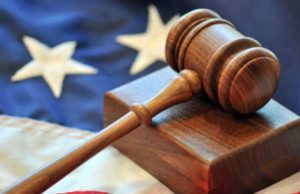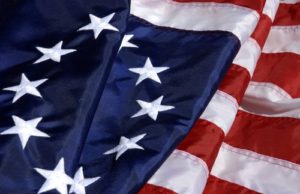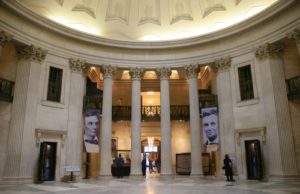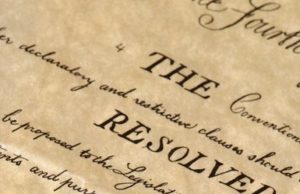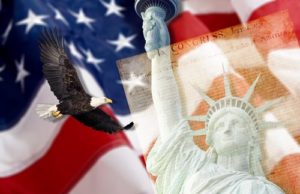
The Events of Shays’ Rebellion: A Prelude to Constitutional Change
Shays’ Rebellion, which unfolded in Massachusetts from 1786 to 1787, stands as a significant event in American history. It was not merely an isolated act of civil unrest but a reflection of the profound challenges and weaknesses in the Articles of Confederation, the United States’ first attempt at a central government. In this article, we will delve into the events of Shays’ Rebellion, its causes, key players, and its impact on the formation of the U.S. Constitution.
Causes of Shays’ Rebellion
1. Economic Hardship: In the aftermath of the American Revolutionary War, many farmers in Massachusetts faced severe economic hardship. They were burdened with heavy debts, high taxes, and an unstable currency. Farmers struggled to make ends meet and were at risk of losing their lands due to foreclosure.
2. Lack of Financial Relief: The Massachusetts government, under the Articles of Confederation, was unable to provide meaningful financial relief to these struggling farmers. The state’s policies favored wealthy creditors, exacerbating the economic divide.
3. Protest and Petition: As their economic situation deteriorated, farmers began to organize and petition the government for debt relief, lower taxes, and a fairer system of representation.
Key Events of Shays’ Rebellion
1. Armed Uprising: In August 1786, a group of farmers led by Daniel Shays, a Revolutionary War veteran, and other local leaders, took up arms and initiated an armed rebellion against the Massachusetts government. They sought to shut down courts and prevent the foreclosure and seizure of farms.
2. March on Springfield: In January 1787, Shays and his followers marched on Springfield, Massachusetts, with the intent of seizing a state arsenal. Their aim was to secure arms and ammunition to further their rebellion.
3. Government Response: The Massachusetts government, led by Governor James Bowdoin, declared Shays’ Rebellion an insurrection and called out the state militia to suppress it. A series of confrontations between the rebels and the state militia ensued.
4. End of Rebellion: Shays’ Rebellion effectively came to an end in February 1787 when government forces dispersed the rebel troops. Many of the rebel leaders were arrested and put on trial.
Impact and Legacy
Shays’ Rebellion had a profound impact on the United States and the formation of the U.S. Constitution:
1. Calls for Constitutional Change: The rebellion highlighted the weaknesses of the Articles of Confederation, particularly the lack of a strong central government capable of responding to domestic unrest. It galvanized calls for constitutional reform.
2. Constitutional Convention: The events of Shays’ Rebellion contributed to the urgency of convening the Constitutional Convention in Philadelphia in 1787. Delegates from across the states gathered to draft a new constitution that would address the shortcomings of the Articles.
3. Ratification of the Constitution: The resulting U.S. Constitution, with its emphasis on a stronger federal government, was subsequently ratified. It provided for a more robust executive branch, a federal judiciary, and the power to tax and raise a standing army.
4. Protection of Property Rights: The Constitution also sought to protect property rights and address the economic grievances that had fueled the rebellion. It established a stable system of government that could provide the necessary checks and balances to prevent future rebellions.
In conclusion, Shays’ Rebellion was a turning point in American history. It revealed the limitations of the Articles of Confederation and underscored the need for a stronger central government. The rebellion’s impact on the drafting and ratification of the U.S. Constitution cannot be overstated, as it played a pivotal role in shaping the structure of the American government we know today. Shays’ Rebellion, though ultimately suppressed, set in motion a chain of events that would lead to a more stable and enduring federal system.
Between the years of 1786 to 1787, Daniel Shays, a Massachusetts farmer and a Revolutionary War veteran, amassed over 5,000 bankrupt farmers and organized a rebellion against a sovereign Massachusetts State Government.
The rebellion was spawned in the wake of the ratification of the Articles of Confederation, which granted sovereignty to each of the 13 states, thereby forbidding any type of involvement on the part of a central government.
The Articles of Confederation refused the central Government the right to taxation and, as a result, they could merely request individual State funding in form of donations. Furthermore, they were powerless to combat any refusal of payment made by any individual State. However, the Articles of Confederation allowed the central Government the authority to coin money. This proved to be financially insoluble because the central Government had expenses such as the upkeep of both a national military and a national postal service. Yet, due to insufficient funds, the Central Government was forced to coin money without any reasonable financial backing, instantly devaluing the national currency.
The flooding of the commercial market with what was essentially worthless currency sent the central Government spiraling into financial ruin. In addition, foreign investors and British landholders were unanimously demanding the repayment of all debts. Because the individual states were granted the authority to regulate all trade and tariff regulation, they began to institute exorbitant, and what Daniel Shays considered to be unjust, tariffs on interstate trade.
As a result, farmers (and other working-class merchants) were unable to participate in commerce on account that they could not afford the heightened tariffs. As their property became foreclosed, their families starved and their loved ones were forced into debtor’s prison. Daniel Shays saw no other option but to rebel against the sovereign Massachusetts State Government. His rebellion was known as Shays’ Rebellion.
Though only leading a force of 5,000 farmers and merchants, Shays’ Rebellion lasted for a full year because the Articles of Confederation forbade the central Government to interfere or involve itself in any State’s respective issues. As a result, the Massachusetts State militia engaged in fierce combat with Daniel Shays’ militia.
Had the central Government been allowed jurisdiction over remedying the damage caused by Daniel Shays’ rebellion, it would have sent the national militia to intervene. Yet, due to governmental regulations set forth in the Articles of Confederation, the central Government could only idly observe the disarray.
As a result of the central Government’s flooding of the commercial market with valueless paper money, each State’s monetary situation suffered as well. As their funds began to be depleted, they were forced to enforce commercial tariffs that quickly bankrupted a majority of its working-class citizens who relied on trade in order to sustain themselves and their families.
The Massachusetts State Government was considered by its citizens to be exceptionally unfair in its trade and tariff regulations. As the Massachusetts State Government hiked its tariff rates, which it was allowed to do by the Articles of Confederation, neighboring states refused to engage in trade relations as a result of the astronomical tariffs enforced by the Massachusetts State Government. The collapse of Massachusetts’s commercial industry coupled with the State Government’s requirement to satisfy its foreign debt forced Shay’s militia to rebel.
Though Shays’ Rebellion was considered to be a small scale uprising with a minimal amount of violence or damage caused, it illustrated the fundamental inefficiencies of the Articles of Confederation. Furthermore, Shays’ Rebellion was not looked at as an isolated event by the Federalists. It was viewed as a preview of events to come as a result of a weak centralized government.





